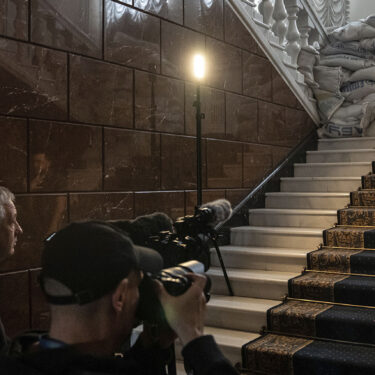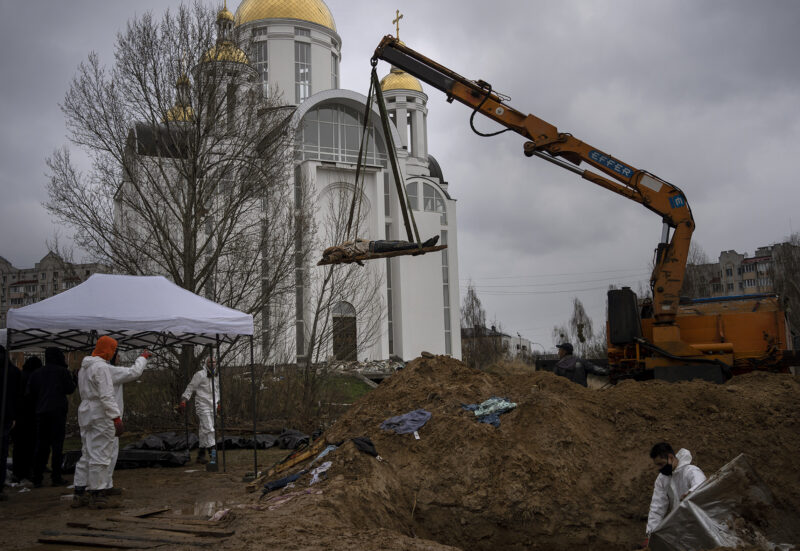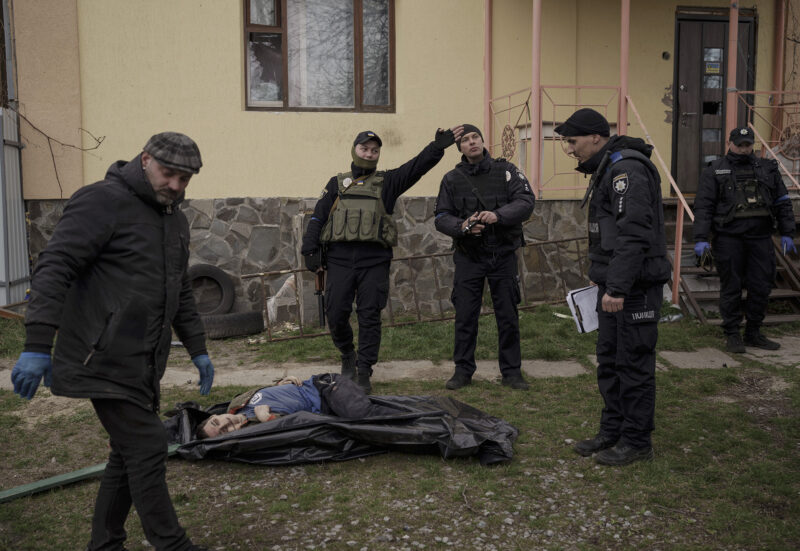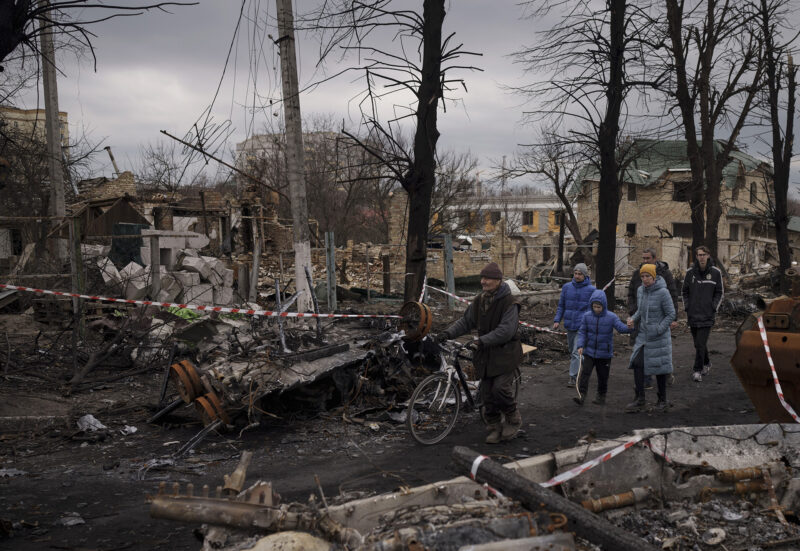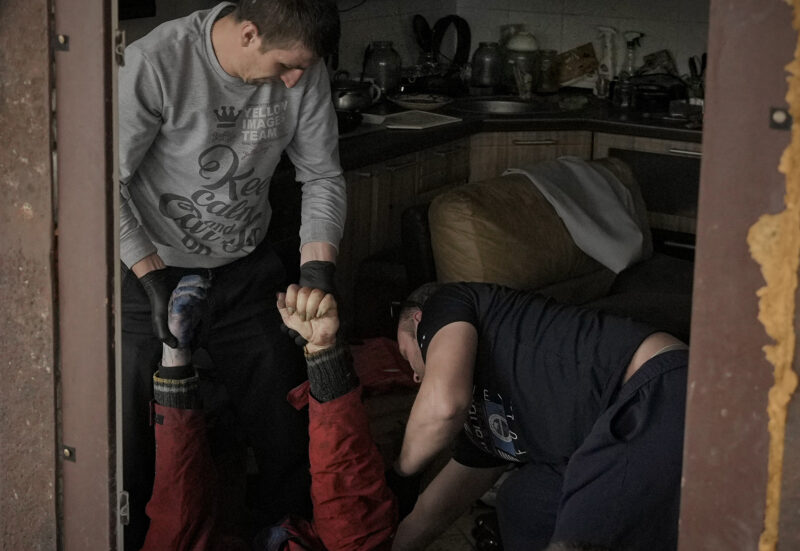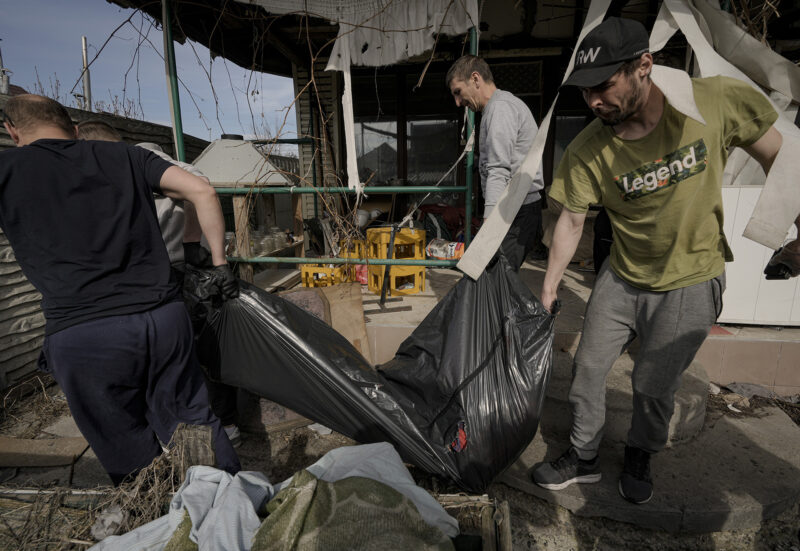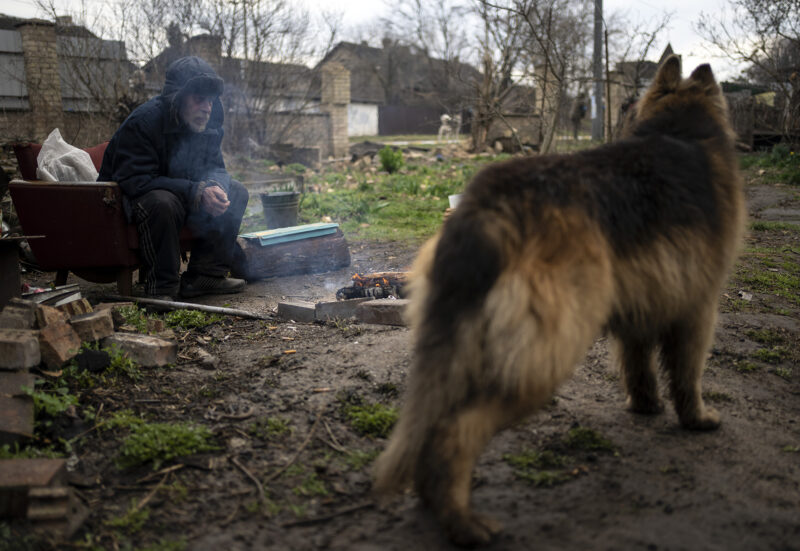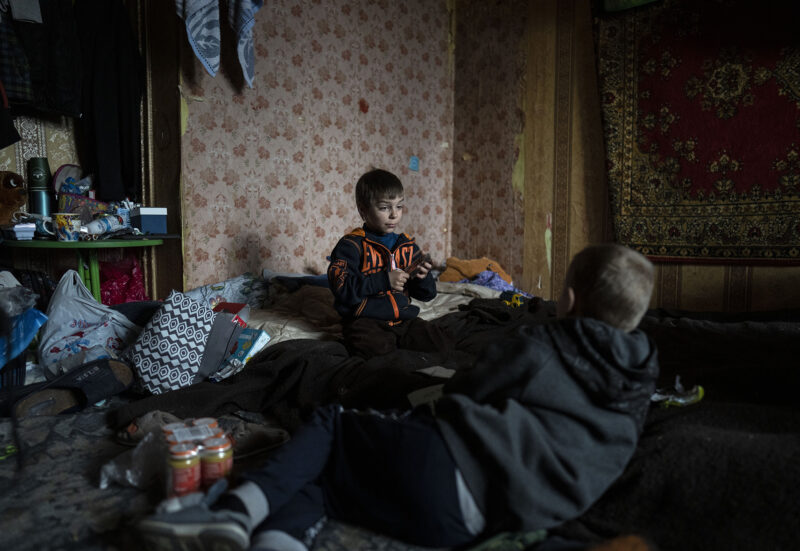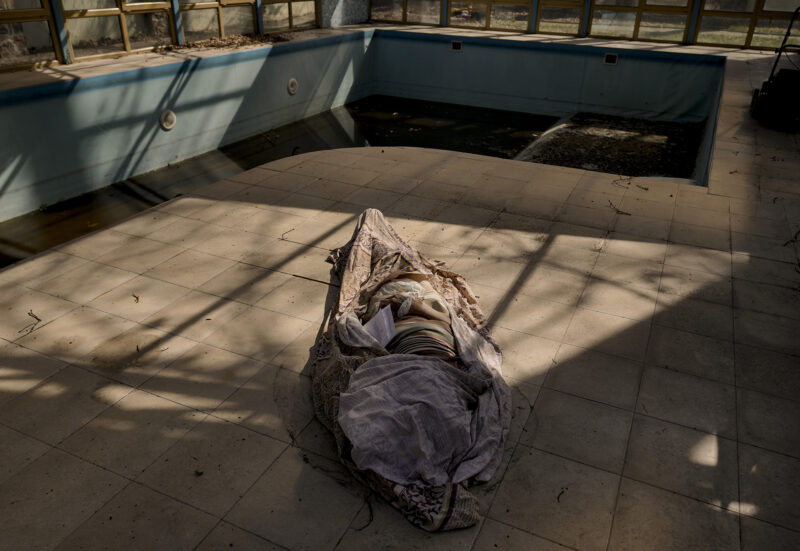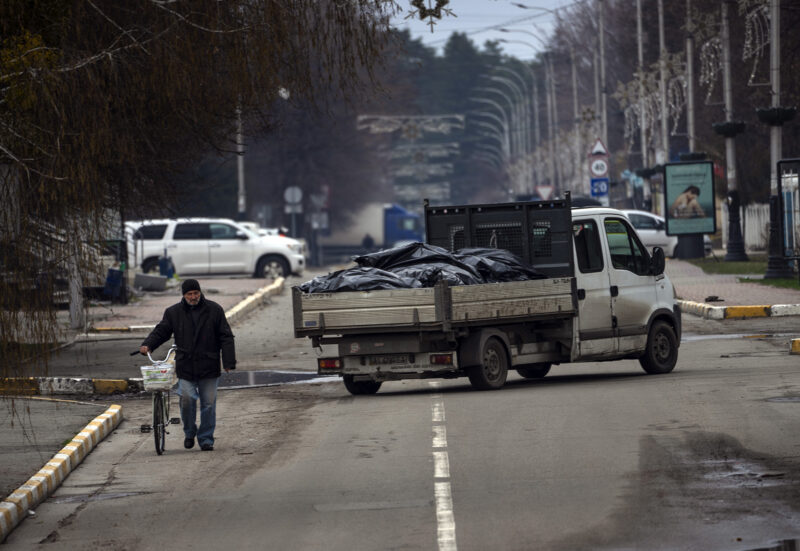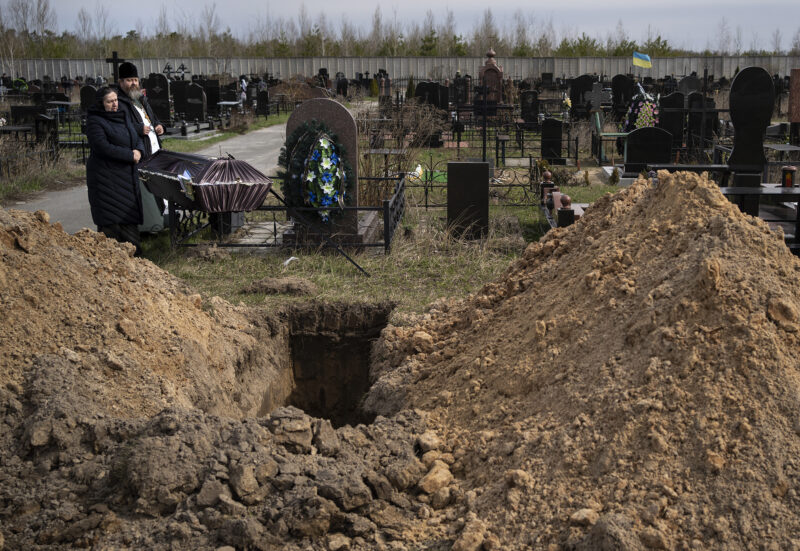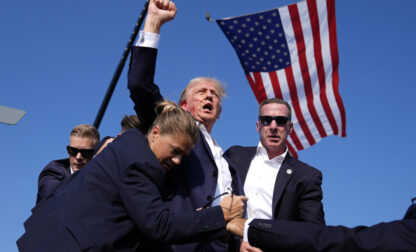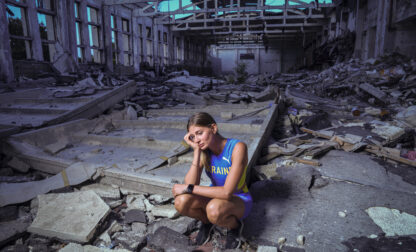With a dedication to continuing coverage of the war in Ukraine, the AP teams in and around Kyiv landed an interview with the Ukrainian president and offered a definitive all-formats chronicle of the mass killings in Bucha.
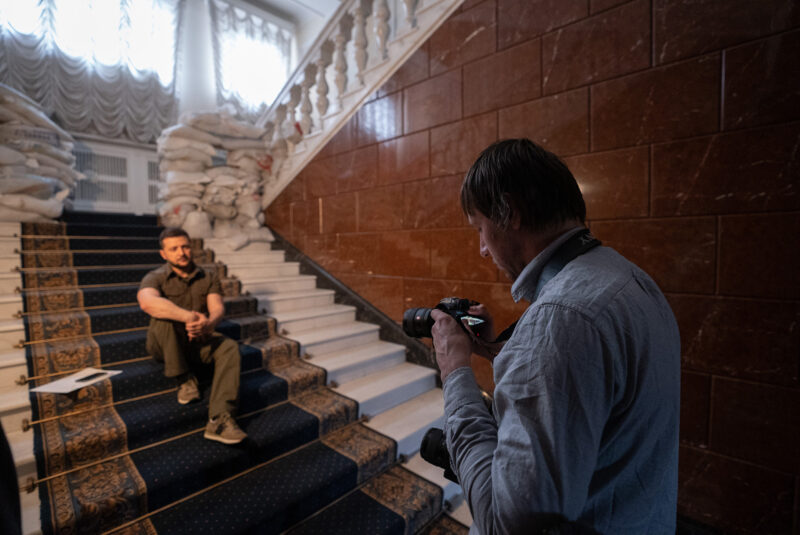
In the capital, citing the groundbreaking exclusive coverage of the city of Mariupol as the best example of AP’s commitment to documenting war crimes, AP journalists relentlessly pursued an interview with Ukrainian President Volodymyr Zelenskyy. Asia-Pacific news director Adam Schreck, video journalist Mstyslav Chernov and photographer Evgeniy Maloletka sat down with the president a day after at least 52 people were killed in an airstrike on a train station filled with civilians desperately trying to evacuate, and as new horrors emerged from the town of Bucha.
Zelenskyy said he remained committed to pressing for peace with Russia. “No one wants to negotiate with a person or people who tortured this nation. It’s all understandable. And as a man,as a father,I understand this very well,” he said. But “we don’t want to lose opportunities,if we have them, for a diplomatic solution.”

AP renewed its push for an interview after Chernov’s and Maloletka’s dramatic,groundbreaking coverage of the besieged city of Mariupol,suggesting that the two AP journalists be among the team conducting the interview. Schreck separately met personally with a member of the president’s staff to press our request for a sit-down interview during a delayed news conference in the bunker-like atmosphere of a government office building: Sandbags lined the halls and windows,hallways were darkened to disorient attackers and armed soldiers roamed the floors.
Maloletka and Chernov suggested to a member of Zelenskyy’s staff to conduct the interview in one of those hallways rather than a bland briefing room. After they convinced the security team and got last-minute confirmation the interview was on, the crew raced to set up their equipment while bemused soldiers lugged supplies and pots of freshly cooked food around them.
The dramatic setting of Zelenskyy speaking amid stacked sandbags added to the power of the all-formats interview.
Meanwhile,in the town of Bucha outside the capital,reporter Cara Anna brought the horror of life and death in Bucha to readers around the world, walking its streets and talking with witnesses to the murders and other abuses under Russian occupation.
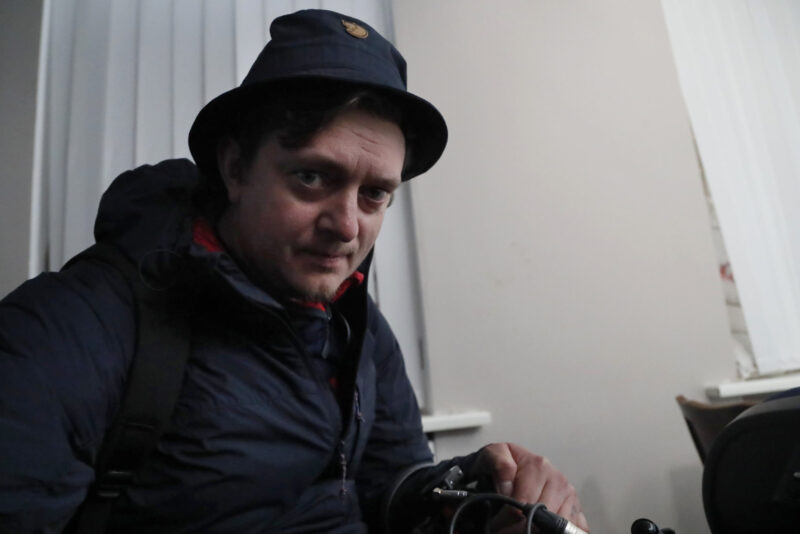
Anna had been asked to put together as complete a picture of what happened Bucha as quickly as possible. She traveled overnight from Lviv to join video journalists Oleksandr Stashevskyi and Chernov,who had been in Bucha already for several days,and photographers Rodrigo Abd,Vadim Ghirda and Felipe Dana. Anna,Abd and Stashevskyi spent two days walking around Bucha as residents guided them to see and document bodies.
The entire team saw at least a dozen uncollected bodies,along with dozens in body bags at a cemetery and the mass grave with even more. They talked with two dozen survivors and witnesses, each telling a story seemingly more horrific than the last.
The Bucha visuals and story,part of an ongoing war crimes investigation by the AP and PBS Frontline,received wide play online and earned the top reader engagement score of 100,a sign that AP’s customers and audience are still keenly interested in definitive, comprehensive accounts of the war and those who must endure its effects.
For their work shedding light on an increasingly dark era for Ukraine,we honor Schreck,Chernov,Maloletka,Anna,Stashevskyi,Abd, Ghirda and Dana as AP’s Best of the Week — First Winners.
Visit AP.org to request a trial subscription to AP’s video,photo and text services.
For breaking news, visit apnews.com

